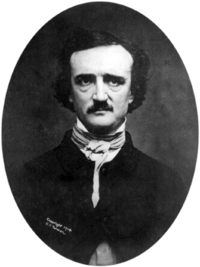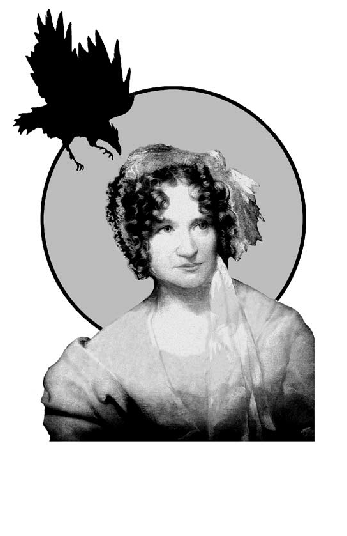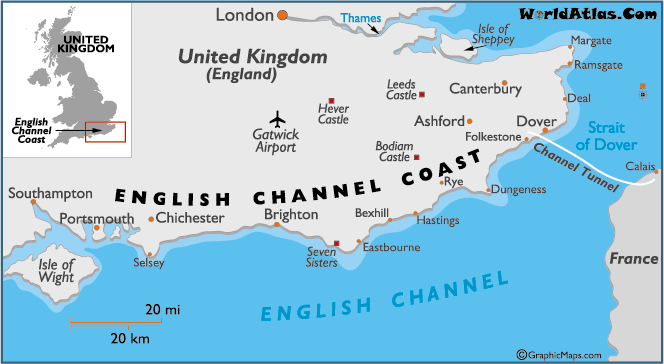Some of you have seen the
abbreviated version of this list of 2012 highlights. Here’s a more detailed
version:
January-present: RI continues to be a delightful
change of scenery (as long as we don’t think about the incompetent drivers, the
mafia, the unions, and the unemployment rate—2nd highest in the
U.S., score!).
January-present: Jesse continues to enjoy his work
as an analyst for the product innovation and management group at the CVS
Caremark Headquarters in Woonsocket (we’re still not sure about the official
pronunciation of this town). He works on developing and strategically
positioning new product offerings for pharmacy benefit management clients (I’m
still not sure what exactly this means, but it’s really important).
January-present: I continue to teach freshman
composition classes at the University of Rhode Island because I realize that I
won’t find a public/private school teaching job because I can’t think of a
legal way to infiltrate the circles of nepotism, cronyism, and other -isms of
RI school districts.
April: I get bored with the glamorous life
of the adjunct instructor and search for a different creative outlet. I begin
searching community college offerings for watercolor classes in the summer. I
don’t find any. But I discover instead that the Rhode Island School of Design
(RISD) offers a certificate in children’s book illustration (with lots of night
classes that accommodate students with full time jobs and families).
June: I start classes at RISD. Jesse
passes the Chartered Financial Analyst Level II test. He studied for 900 +
hours. No big deal.
August: We celebrate our 7th
wedding anniversary in Montreal, Canada.
October: I have another birthday. Friends
deliver Angry Bird cake and chocolate bouquets. Friends deliver me to a
Japanese/Korean restaurant. Cake: strawberries & cream from Wright’s Dairy
Farm. Gifts: plastic poop (in honor of Team P.U.), a CD with MC Hammer’s
greatest hits, but most of all, friends.
I start my
second year of teaching at URI. I start my second term of classes at RISD:
Photoshop I, Intro to Illustration, Illustration I.
At the beginning
of October, the directors of a nonprofit arts-based oral history program called
the “I Was There Project” (IWT) at Vartan Gregorian Elementary School interview
me. They have two positions, or two “teaching residencies” available.
IWT was
started by two parents with children who attend Vartan Gregorian, which is
located in the historic Fox Point neighborhood of Providence. They wanted
students to have more connections to the history of the school and
neighborhood; Fox Point has a rich history of Portuguese, Cape Verdean, and Irish
immigrants and other artists and writers who have made significant cultural
contributions to Rhode Island. Near the school are also lots of important
landmarks that have to do with the arts.
Example:
Edgar Allan Poe spent part of his life on Benefit Street.
Example:
the Athenaeum (4th largest subscription library in the U.S.) is on
Benefit St. Poe hung out here often.
Example:
Broadway superstar George M. Cohan was born in Providence and has a street
named after him. George M. Cohan Blvd is behind the school.
Example:
Lewis Hine, famous documentary photographer took lots of pictures of children
at work in Rhode Island. The pictures were part of the Child Welfare exhibit of
1912-1913; this exhibit pushed legislators to change labor laws so that working
children wouldn’t be exploited.
So I go to
the job and learn that Vartan Gregorian’s 4th and 5th
graders participate in IWT. The 22-week teaching residency has 3 parts:
1) The
history component. The teacher gives background information on the year’s
theme, which changes every year. This year, it’s about how Fox Point artists
(historic and contemporary) have told stories and influenced culture through
architectural photography, vaudevillian theater, literature, and processional
music. These four art forms are especially prolific in Providence.
2) The
oral history component. The teacher prepares students to interview
contemporary residents of Fox Point who have connections to the art forms
previously mentioned. These interviewees are photographers, national
bestselling authors, professors, musicians, architects, etc.
3) The
arts immersion component. The 2 4th grade classes and 3 5th
grade classes will each be assigned a different art form (the four mentioned
above). A teaching artist who is an “expert” in that art form will come to the
classroom and work with the kids to produce literature, theater presentations,
photography exhibits, and homemade musical instruments.
IWT has a
partnership with the Public Humanities Department of Brown University, which is
a few minutes away from Vartan Gregorian. There’s a team of five graduate
students in the public humanities program this year, so they will be the IWT
research team to help dig up interesting information relating to the historical
context for part 1, and they will come to the classrooms to be teaching assistants
to the IWT teachers until the end of the project.
The end of the project culminates in two events: one school wide event for kids of Vartan Gregorian (it’s a K-5 school) and one public event where family/community members can come to see the kids exhibit their work.
One year
the kids studied the history of the jewelry district in Providence. Once upon a
time, Providence used to be the capitol of costume jewelry design. The kids
interviewed a jewelry designer and then designed and crafted their own lines of
jewelry. Last year, the theme was food culture and the kids interviewed
restaurant owners and chefs. One chef came to the school and showed kids how to
make a 30 second omelet. A cook at Abyssinia, an Ethiopian restaurant near the
school, was interviewed and the kids heard him tell this story, an explanation
of why he didn’t like eating tuna fish as a kid:
Yeah, when I was a child I don’t
like to eat, you know the sardine or tuna? I was, I hate. Even when I smell, I
hate. But I eat fresh fish, fresh fish from the sea. So, until I, from my
childhood until I am in the navy, I don’t eat tuan or sardine. Then, in 1977,
there is a war in Eritrea. War. Then we are broken some places. I was in the
navy at that time. There, we are broken, no water, no food, nothing. And, after
almost six hours, they brought us bread and sardine and tuna. Oh, I say, “Oh my
god. I am very hungry and tuna is coming! Today, I will try it.” I say, because
I am very very hungry, and that’s a critical time between death and life. So I
open it, just, for almost twenty-four hours, we eat bread, sardine, and tuna.
Then, I like it very much. I love it. After that, I start to eat. Now I eat.
That year,
the kids compiled and published a memoir cookbook as their final project.
2012-2013
is an especially challenging year because the theme deals with so many
different topics—literature, architecture, photography, music, and theater.
***
October-November: They hire me. I teach with a recent
graduate from RISD. She studied illustration and is younger than me, more
professional, more patient, more passionate, more everything. I love her.
The
previous IWT teacher did something smart. Every year, she made sure to
construct a timeline with the kids to give them a historical context for the
theme. For last year’s theme, she helped the kids study significant inventions
that affected food processing. Examples: the oven, microwave, refrigerator,
etc. The kids read a short description of each invention, made a commercial about
each invention, and presented their commercial to the class. They placed the
year of the invention on a timeline and were able to refer to the timeline as a
visual reference throughout the year. How brilliant is that?
***
So with 5
different topics this year, I have no idea how to make a timeline to use as a
visual reference of important background information related to the theme. It makes
me feel nervous and stressed and sleep deprived for a month.
But here’s
what I finally invent, using the research from our Brown graduate students. For
each topic, I create a “history mystery” and collect some clues related to each
topic. I divide students into groups and they look at their clues and make
inferences/predictions about what they think happened, based on what they
see/read. Here's my favorite:
1. What
would you do with these clues?!

salon
a gathering of people under the roof of an inspiring
host, held partly to amuse one another and partly to refine the taste and
increase the knowledge of the participants through conversation. These
gatherings often followed an ancient definition of the aims of poetry,
"either to please or to educate.”
“The Raven
in his eyrie…has swooped upon your little dove cote in Providence. May
Providence protect you if he has!—for his croak is he most eloquent imaginable.
He [is] in truth ‘A glorious devil, with large heart & brain.”
------------
The kids
came up with a lot of answers that made sense. One group thought that Cupid
made the couple fall in love at the salon and the guy sent the girl a
valentine, but she died in a room full of books and he was heartbroken and
wrote her poetry and left it at her grave.
Another
group thought that the two fell in love and got married in the salon, but the
guy was the devil and killed his wife. And they got caught up in the gruesome
details and forgot to say something about the books.
Aren’t you
dying to know what really happened? Of course. Poe saw Sarah Helen Whitman, a well-known
poet who lived in Providence, for the first time in 1845. They officially met
in 1848 at a Valentine’s Day party held in a salon hosted by Anne Charlotte
Lynch Botta, an American poet, teacher, and socialite. Sarah had written a poem
for Poe and it was read aloud to the whole party. Poe loved it and her poem was
the first of 16 subsequent poems exchanged between the two of them. They spent
more time with each other, hanging out in the Athenaeum (the room with the
books is a room in the Athenaeum library on Benefit St) and in the Swan Point
Cemetery (in Providence). Sarah was warned by a friend who had previously had
an affair with Poe, that he was a scallywag—he was an inveterate drinker—but
she disregarded the letter and kept dating him. They got engaged. Poe showed up
drunk to their engagement party. Sarah still loved him. One day in the
Athenaeum she received an anonymous letter informing her that Poe had broken
his promise to remain sober. That was the deal breaker. She dumped him. Poe
died in 1849.
Would you
like to solve another mystery? Ok. If you insist.
Vaudeville
a theatrical genre of variety
entertainment popular in the United States and Canada from the early 1880s until the early 1930s. Each
performance was made up of a series of separate, unrelated acts grouped
together. Types of acts included popular and classical musicians, dancers, comedians, trained animals, magicians, female and male impersonators, acrobats, illustrated songs, jugglers, one-act plays or scenes from
plays, athletes,
lecturing celebrities, minstrels, and movies.
1925
$6,000
4,000
gallons
 |
| Gertrude Ederle, first woman to.... |
 |
| Fay's theater house in Providence |
My favorite
guesses were: Gertrude was the first woman to swim across the English Channel
and she went to Providence and they paid her $6,000 dollars in dimes to eat a
dime and she had to wash it down with 4,000 gallons of water.
Somebody
else guessed that at one performance, Fay’s sold 4,000 gallons of soda and made
$6,000 in profit. Gertrude, who swam across the English Channel came to see the
show that night.
The real
story: Gertrude was the first woman to swim across the English channel and
became famous for this feat in 1925. She toured with a traveling vaudeville
show for a while and in 1925 the owner of Fay’s paid her $6,000 to swim in a
4,000 gallon tank on stage. She was ready for her performance, but the
firefighters who were supposed to fill the tank underestimated the time it
would take to fill 4,000 gallons, so she had to stand on stage ALONE for at
least half an hour (or maybe a few hours) improvising, telling jokes, telling
stories, etc. $6,000 was the most expensive vaudeville act in Providence’s
history. The dime represents the cost of an average vaudeville show at the
time.
Anyway,
that’s what I’m working on in my spare time.
December: Jesse achieves other prestigious
milestones. He plays his 333rd game of online Scrabble via Facebook
(since 2009). He gets a new Angry Birds high score; out of 13 million who play,
he has the 1,215th highest score. The score rises daily.










No comments:
Post a Comment